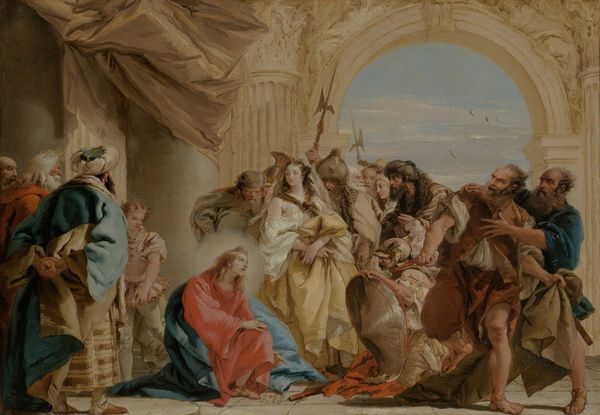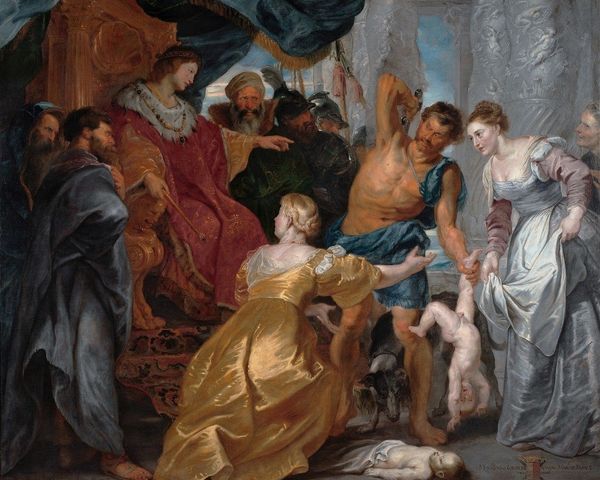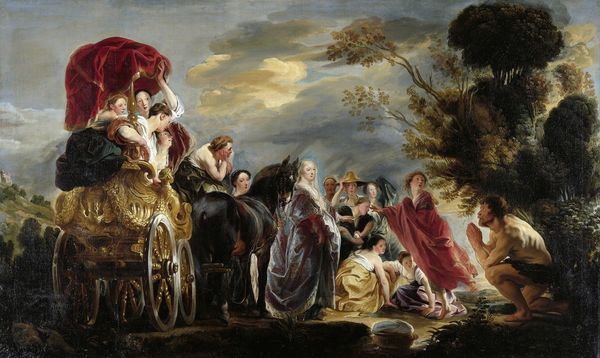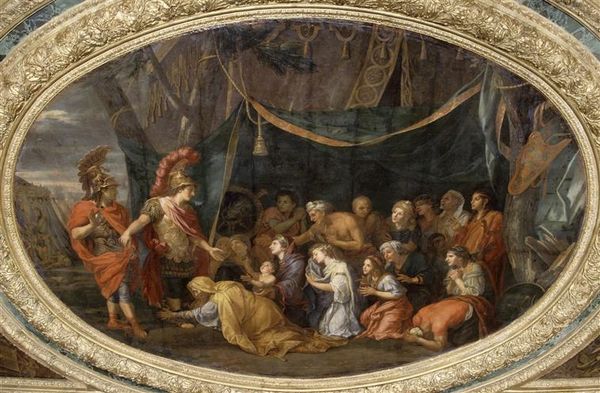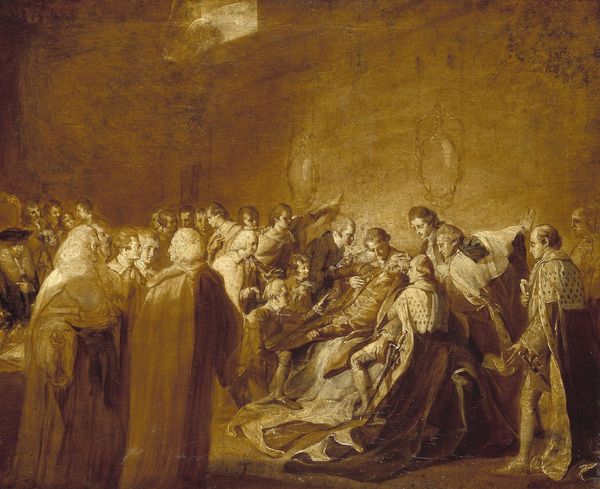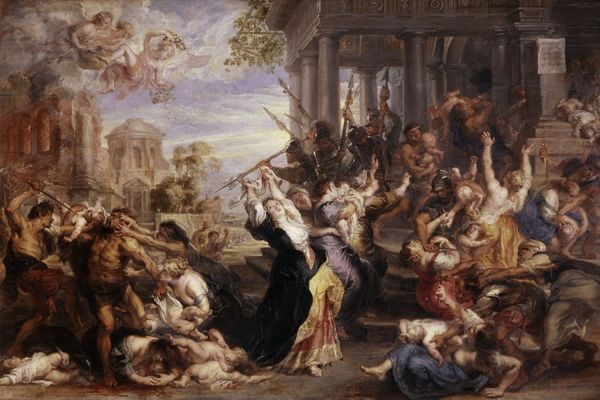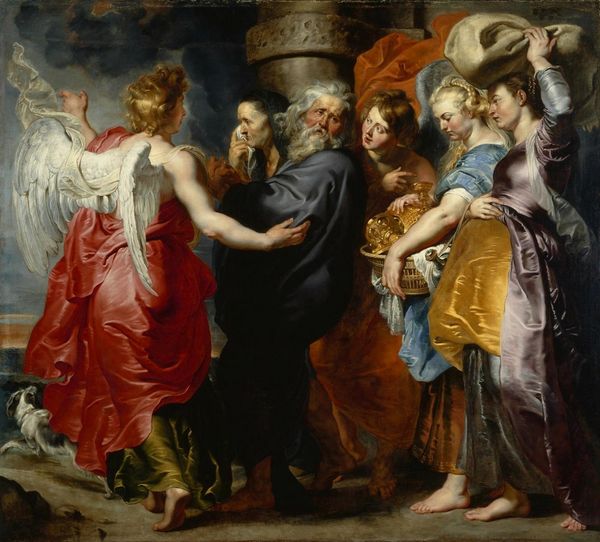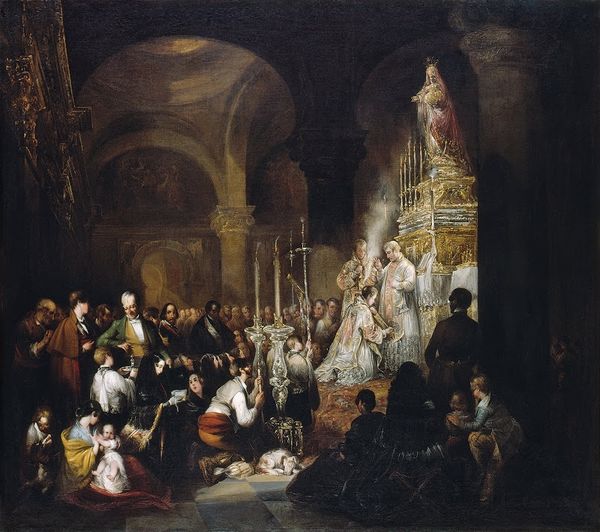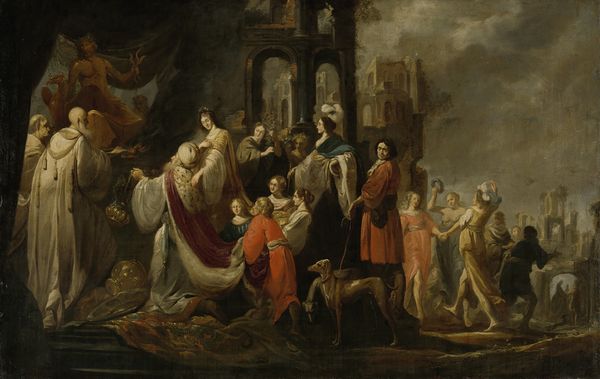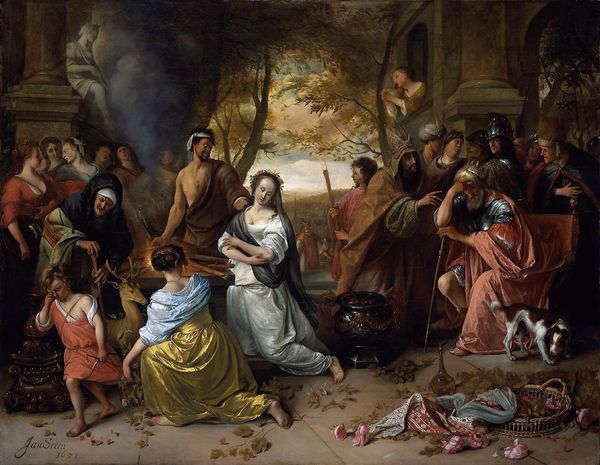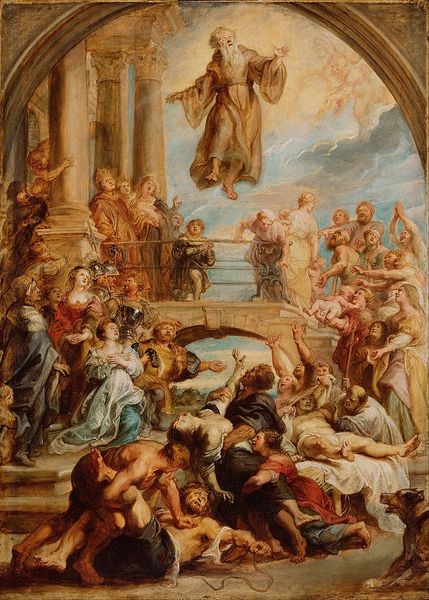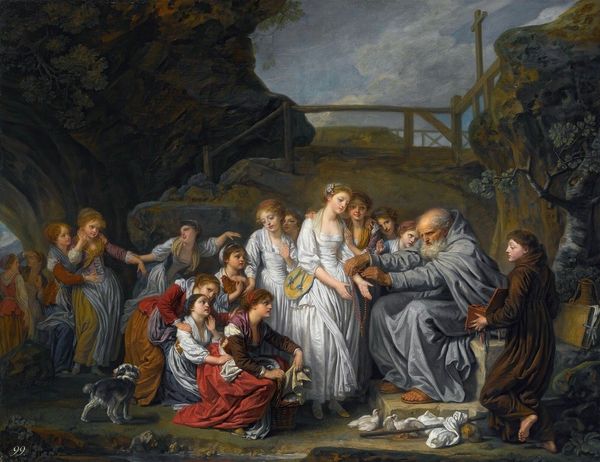
painting, oil-paint
#
figurative
#
allegory
#
baroque
#
painting
#
oil-paint
#
landscape
#
painted
#
figuration
#
oil painting
#
underpainting
#
painterly
#
painting painterly
#
genre-painting
#
history-painting
Copyright: Public Domain: Artvee
Curator: Look at this shimmering canvas—Rubens' "The Garden of Love," likely created between 1630 and 1635, capturing a riotous assembly of figures amidst classical architecture and a vibrant landscape. It practically pulsates! Editor: It feels utterly decadent, doesn't it? So much flesh, so much…fabric. There's an overwhelming sense of abundance and revelry, almost verging on chaotic. Like a bacchanal interrupted by Cupid. Curator: That "chaos" you perceive is deliberate. Rubens was a master of Baroque dynamism, and "The Garden of Love" perfectly embodies this style. It's overflowing with allegorical allusions. For example, that sculpture of Venus? And, of course, there's no lack of cherubs. Editor: You're right. Everything directs your eye upwards, spiraling you up through the action like you're on a rollercoaster. Speaking of which, who are all these people? Is that actually Rubens, I heard he put his wives or love interests in his work sometimes... Curator: Interesting that you pick up on the figure that many believe is Rubens. As for who all these figures represent… that's a question art historians love to debate! Some argue this isn't simply a depiction of amorous bliss but a more profound reflection on marriage, earthly pleasures, and idealized love within a garden that merges personal experience and classical tradition. Editor: Knowing that he was possibly portraying himself really changes how you look at it. There's something intimate in it, maybe a sense of him immortalizing personal happiness that is quite arresting, though of course one would also question the historical positionality that allowed for such an ideal... Curator: Indeed! That tension you mention is one reason the painting remains so compelling. And look closer; notice how Rubens employs rich colours, fluid brushwork, and a mastery of light to imbue the scene with emotion and sensory appeal. The fabric looks real, as do the figures. It's as if he could bring everything in life to the painting. Editor: Seeing all these human, almost hyperbolic elements set against classical sculpture underscores the power relations that operate to construct the meaning and function of family in society. All this together means Rubens was no dummy! Curator: He truly captured an image of happiness in bloom. Editor: Though perhaps, an idea of happiness only possible for some! It makes it all the more interesting, to see where this painting challenges and reaffirms existing ideology.
Comments
No comments
Be the first to comment and join the conversation on the ultimate creative platform.
